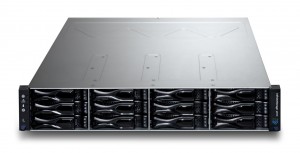 It is not uncommon for hard drives within a RAID array to fail without warning. When it happens, it usually catches the users off guard and results in technicians scrambling to try random recovery measures with the hope that they can avoid major down time. What they don’t know is that their efforts may be the crossing the line between a few days of down time and permanent data loss.
It is not uncommon for hard drives within a RAID array to fail without warning. When it happens, it usually catches the users off guard and results in technicians scrambling to try random recovery measures with the hope that they can avoid major down time. What they don’t know is that their efforts may be the crossing the line between a few days of down time and permanent data loss.
In an attempt to help decrease the number of unrecoverable RAID data recovery projects that we get and increase the likelihood that the data can be recovered as quickly and affordable as possible, we have constructed a list of steps to follow when responding to a failing/failed RAID array.
There are two scenarios to happen when drives fail in a RAID array. The first being when the array stays online, but runs in a degraded mode and the second is when the RAID goes offline and the data is not accessible.
Degraded Mode:
- Make sure that all the data is backed up. That means that you should physically confirm that all critical files are backed up, are current and open from the backup. (a corrupt backup will not help if the re-build fails)
- If you can, it would be wise to get a full sector-by-sector clone of each of the working drives before inserting a drive for a rebuild. If during the rebuild process, a single sector with a read error is found on another drive, it will cause a second drive to fail and subsequently the rebuild willl stop and the RAID will no longer be accessible without data recovery measures.
- Once you are sure you have a backup plan in place, replace the failed drive in the RAID array and let it rebuild. If it completes, you are back in business. If it fails, replace all the drives in the RAID array and restore from the backup, setting all the original drives aside. If the data restoration fails, call Recovery Force right away for the next logical step to ensure that the data is recovered as safely and quickly as possible from the original drives.
Offline Mode:
- Never attempt to rebuild or force an offline raid back online. The likely result is it will not work and it has very good odds of damaging the data and possibly rendering all the data unrecoverable
- Call Recovery Force for advice. It is a lot better to make the free call before trying things than to call after things get really bad.
- Get a full sector-by-sector copy of each drive in the RAID array. If this cannot be done or you are unsure how to do this, call Recovery Force for assistance.
- Virtually reconstruct the RAID with the clones and recover the data to a new hard drive. This is a lot easier said than done. The experience and knowledge of the Recovery Force team can likely do this process within minutes compared to the days that it will take a none data recovery professional to complete. (If you can get to this step, this may be something we can help you with our remote data recovery services.)
Thinks to note:
- RAID controllers can misreport good and bad drives.
- Tech support doesn’t necessarily give the best advice for protecting the data on the array
- Basically, never assume anything.
And the most important thing to remember:
If in doubt, give Recovery Force a shout.